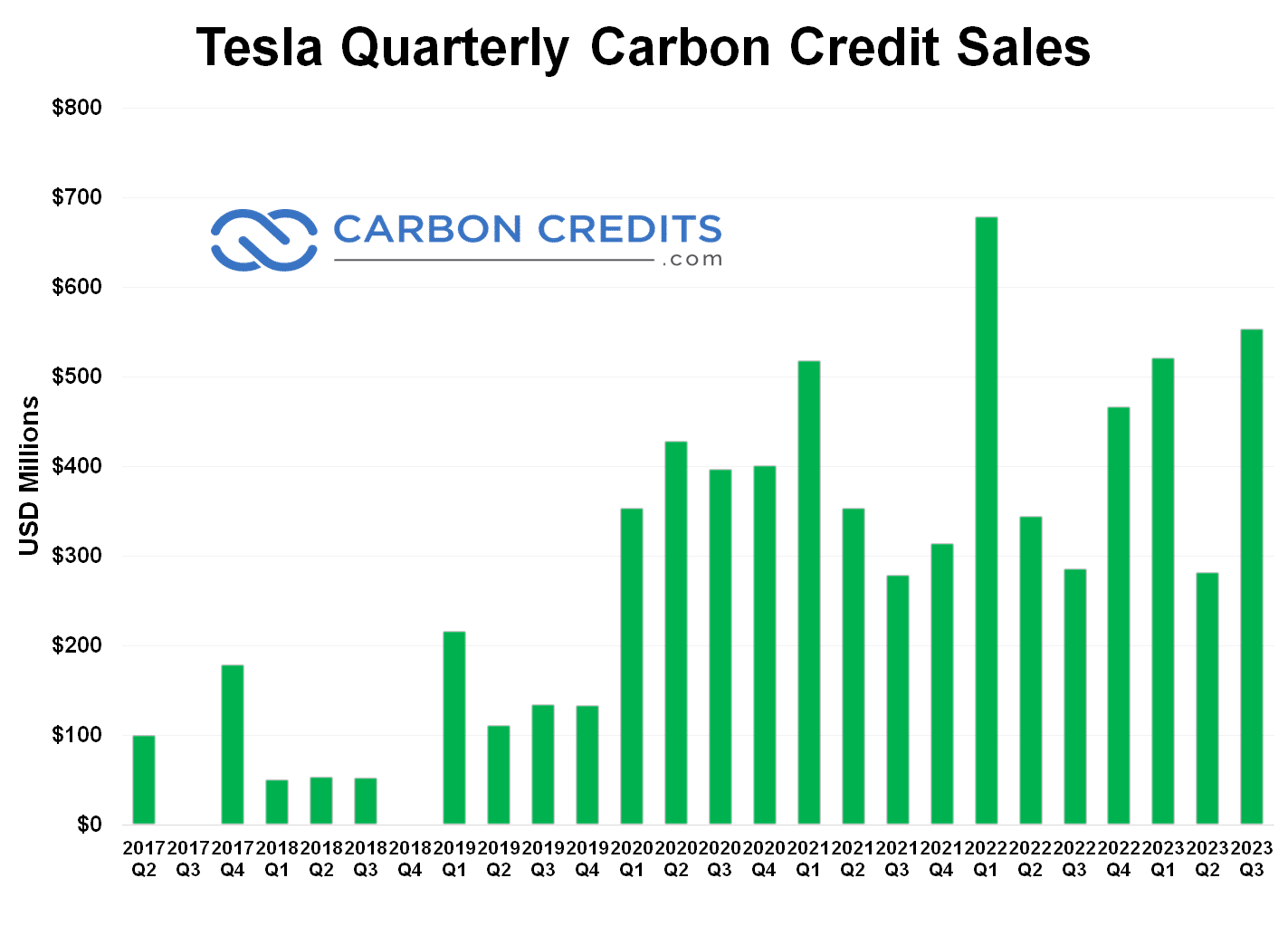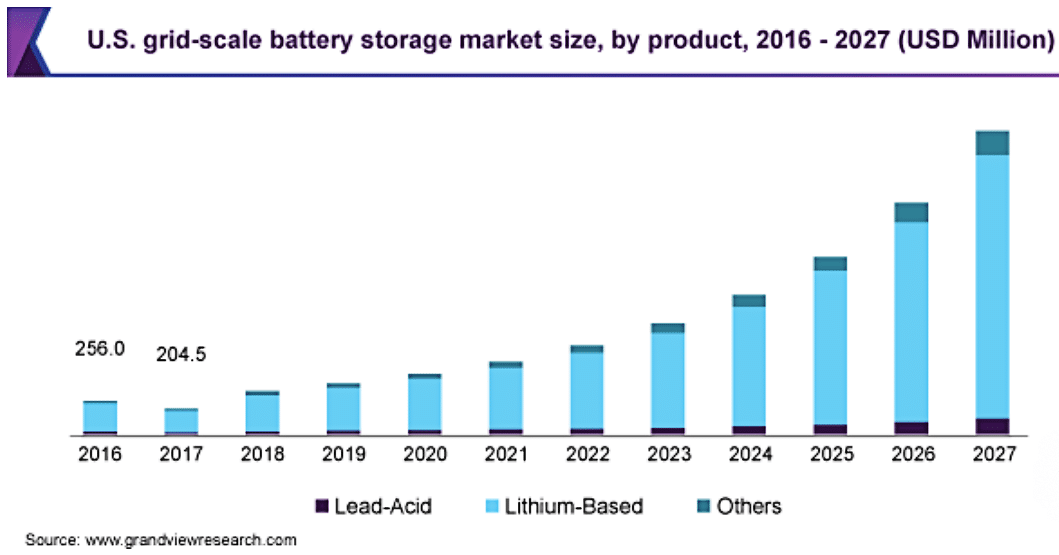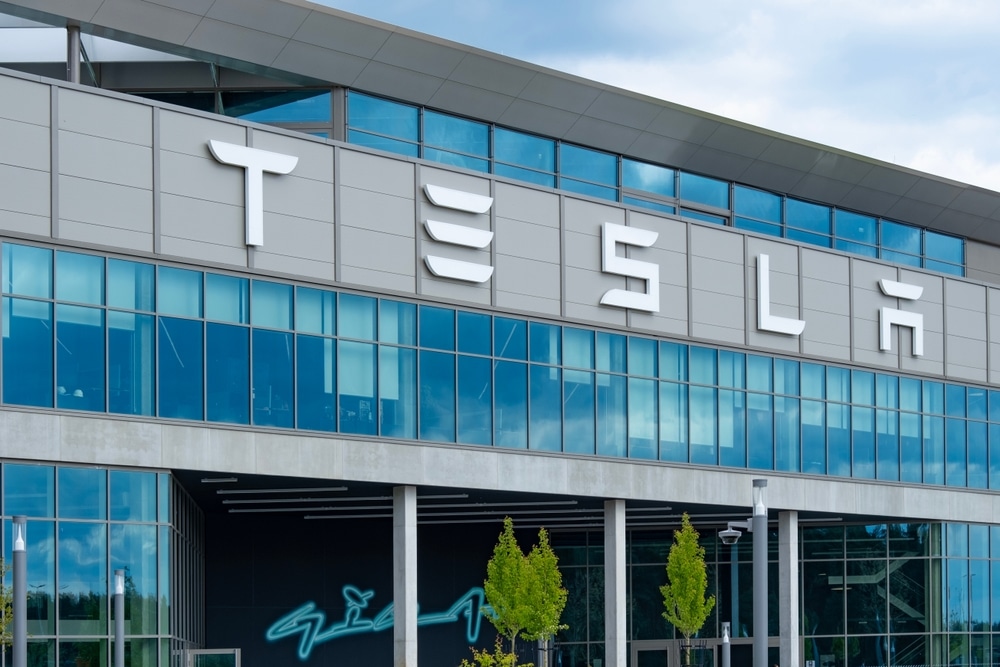While Tesla has missed this year’s third quarter on both earnings and revenue expectations since its Q2 2019 report, the EV leader reported record-breaking carbon credit sales, which the company referred to as regulatory credits.
For over 4 years, the EV maker has been drawing attention by reporting record-breaking income from selling carbon credits. The automaker reported a revenue of $554 million from the Q3 2023 sale of carbon credits, significantly contributing to its profits.
This record sales also represented a huge portion of Tesla’s net income in Q3 2023 ($1,878 million) – 29%. Most notably, its quarter three carbon credit revenue increased 94% year-over-year, marking the value of Tesla’s EV production.
Tesla Carbon Credit Revenues Are Soaring
Tesla has been earning revenues from the sale of carbon credits since 2017. These credits, otherwise called carbon offset credits or carbon allowances, give companies a way to offset their carbon emissions by investing in projects that reduce planet-warming emissions.
Despite Elon Musk’s “paranoia” over the global economy’s instability due to ongoing wars, its soaring carbon credit income steadily contributes to its overall profits.
A 29% revenue-to-net income ratio is hard to ignore and speaks highly of the value of the credits for Tesla.

First quarter 2022 has seen the highest income at $679 million, while the company also earned a total of $1.78 billion for that year alone.
It’s not clear who exactly bought the credits and for how much, but most likely they’re sold to other car companies that miss out on emissions standards of the California Air Resources Board (CARB).
Previous buyers include Tesla’s peers, General Motors and Chrysler, but this year’s purchasers were not disclosed.
The revenue generated from credit sales supports Tesla’s mission to accelerate the transition to cleaner energy and sustainable transportation. By incentivizing the adoption of EVs by other carmakers, carbon credits contribute to reducing carbon emissions in the sector.
Ramping Up Clean Energy Solutions
Producing and delivering more EVs is just one part of Tesla’s commitment to clean and sustainable energy transition. A consistently growing business segment of the carmaker is its lithium-based energy storage solution.
Though this segment is much smaller than its automotive business, it has expanded rapidly.
In its current quarter financial report, the company’s energy generation and storage revenue was also up about 40% year-over-year. The segment raked in $1,559 million in Q3 2023 revenue compared to $1,117 million in the same quarter last year.
Tesla also reported that its energy storage deployments hit a new record, up by 90% YoY to 4.0 GWh, the highest quarterly deployment ever.
The growth was mainly driven by the company’s ongoing ramping up of its Megafactory in California. Tesla aims to produce 10,000 Megapacks (energy storage for large-scale commercial and utilities projects) each year in this factory.
Other energy storage systems include Powerwall for residential and Powerpack for businesses, which all use lithium-ion batteries.
The growing demand for Tesla’s Megapacks signals that there’s a huge market for grid-scale battery energy storage solutions. Estimates project that this market will achieve over 24% growth rate through 2027 to more than $15 billion.

This growing business, along with its solar deployments, is a key part of the EV maker’s journey to sustainability.
More than Just a Carbon Credit Winner
Manufacturing EVs, deploying battery energy storage and solar panels all generate carbon credits by avoiding carbon emissions. The revenues that these credits bring are undeniably huge, giving Tesla billions of dollars in income.
But more than the cash, the increasing sales highlights the role of Tesla’s clean energy and sustainable solutions in reaching net zero targets.
Achieving a sustainable global economy entails curbing greenhouse gas emissions, which requires addressing both energy generation and use. Both areas are what the transportation and energy sectors are tackling to reduce harmful emissions.
Tesla is in an advantaged position to take charge in this quest by designing and implementing clean transportation and sustainable energy solutions.
The carmaker has been enhancing its manufacturing capabilities and employing advanced technologies to continuously improve its clean energy operations. The automotive giant is also working to slash its own carbon footprint as outlined in its sustainability paper.
Tesla’s remarkable success in carbon credit sales not only bolsters its financial standing but also underscores the significance of clean energy solutions in combating climate change. As the company advances its sustainable practices, it continues to pave the way toward net zero emissions.


